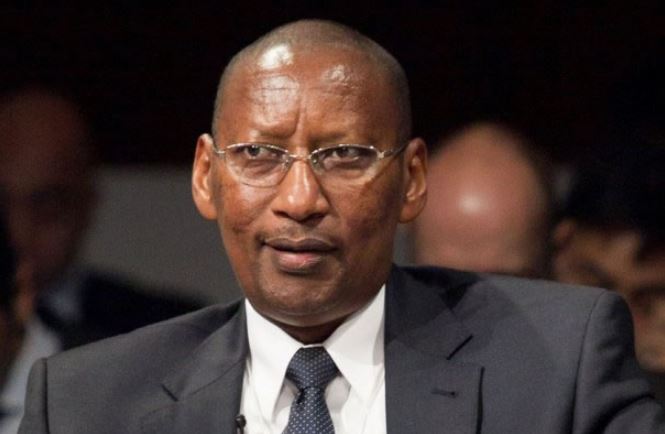
John Rwangombwa – central Bank Governor
For the past eight months, Rwanda has managed to cut down its trade imbalance by 24.9%.
John Rwangomba, the Central Bank Governor on Wednesday said that import receipts decreased to $885.4 million from $1,179.1 million during the first eight months of the year compared to the same period of 2016.
He said reduction in trade imbalance during the period was triggered by a decrease in formal imports by 7.9% in value and an increase of formal exports value by 44.9%.
In the same period of the year, Governor Rwangombwa told journalists that formal exports increased to 38.4% from 24.4% while it increased to 42.3% from 29.6% when informal cross-border trade is included.
In the same period of the year, Rwangomba said that the bank reduced inflation by half.
Inflation decreased from 6.2% in the second quarter of 2017 to 3.8% in July and 3.2% in August. Inflation is expected to remain below 5.0% in the rest of 2017.
The governor said that local currency continues to stabilize against US dollar, as a result of the increase in export receipts and a decline in import bills.
Meanwhile, the banking sector continued to register tangible growth.
“The total banking system net profit after tax grew by 11% to Rwf21.5 billion in June 2017 from Rwf19.4 billion reported in June 2016,” said Rwangombwa.
In the same period, he added, the insurance sector’s profit after tax was Rwf18.5 billion, up from Rwf10 billion reported in June 2016.
In terms of increased assets by financial institutions, the central bank governor said the sector registered growth in the second quarter of 2017.
Total assets of the banking sub-sector increased by 13% year-on-year in June 2017 to Rwf2.6 trillion. In the same period, the assets of the micro-finance sub-sector increased by 8% to Rwf248 billion.
The liquidity ratio of banks stood at 39% at end June 2017, compared to 20% minimum prudential requirement.
The asset quality of banks recently deteriorated as non-performing loans ratio of banks increased to 8.2% in June 2017, from 8.1% in March 2017.
Similarly, the insurance and pension sub-sectors increased by 10% and 13% to Rwf366.5 billion and Rwf661.3 billion respectively.

